
Witness traditional shipbuilding techniques as skilled shipwrights maintain historic wooden vessels. The Henry B. du Pont Preservation Shipyard was the first shipyard built specifically for preservation in the United States, and possibly the world, marking a new era in maritime preservation.
The year 2022 marks the 50th anniversary of the opening of the Henry B. du Pont Preservation Shipyard at Mystic Seaport Museum.
A special thanks to Clark Senior Curator for Watercraft, Quentin Snediker, for his contribution to this retrospective.
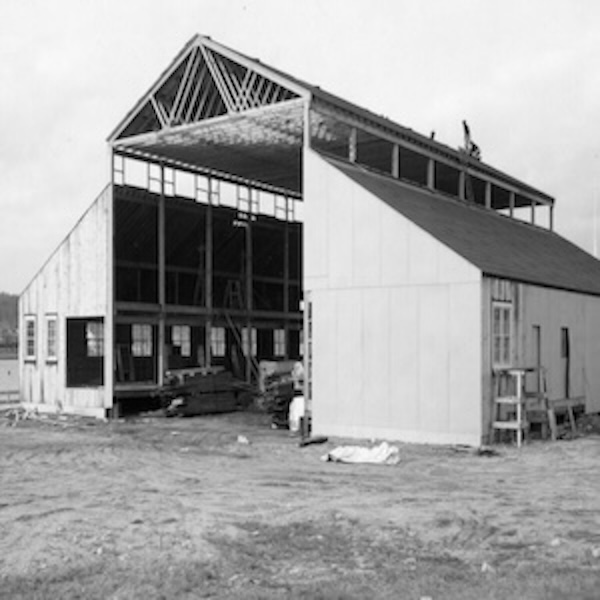
Watercraft preservation at Mystic Seaport Museum began with the acquisition of the Museum’s first vessel, the sandbagger Annie, in 1931. In the early years, local boat builders were contracted to maintain the small but growing fleet. When the Museum acquired the Charles W. Morgan a decade later the maintenance and preservation responsibilities grew exponentially. At first, most work was accomplished by local Boy Scout and Sea Scout groups led by a few facilities staff, beginning a legacy of volunteer participation that continues to this day. By the late 1950s, the fleet grew to nearly thirty watercraft and with it, four staff positions were created to meet the care demands. During these years, maintenance took place on the site of the former George Greenman & Company Shipyard in the area now known as Siegel Point and Scott’s Wharf near the replica of the Brant Point Lighthouse. Larger vessels like the Joseph Conrad and L. A. Dunton were taken to New London’s Thames Shipyard for haul-out.
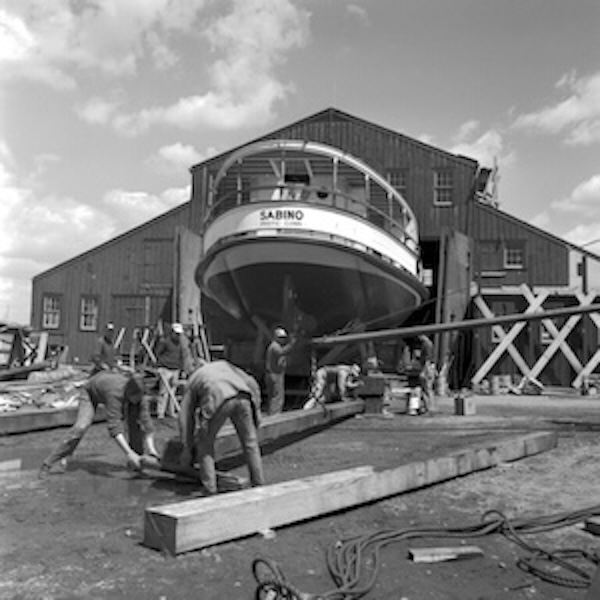
In the 1960s, attitudes toward historic preservation underwent a nationwide sea change with the passage of the National Historic Preservation Act of 1966. By then the Museum’s fleet had grown to over 100 watercraft and we became a leader in the maritime preservation movement. With concerns for long-term preservation and diminishing capabilities to care for wooden ships in the commercial world, Museum Trustees began to study the feasibility of creating our own shipyard. Such notables as Waldo Howland, John Levitt, “Pete” Culler, Irving Johnson, and Olin Stephens, among others, argued passionately in favor of this significant commitment. In the spring of 1970, the Board approved the project. Funding was provided by the family of the late trustee Henry B. du Pont and the facility was named in his honor. By then the fleet had grown to nearly 160 watercraft. It’s hard to decide what milestone marks the anniversary of the long process resulting in “the Shipyard,” but for our purposes, we’ve called it January 2, 1972, the day Howard Davis, long-time shipwright, recalled moving his toolbox from the Point into the new Shipyard Main Shop.
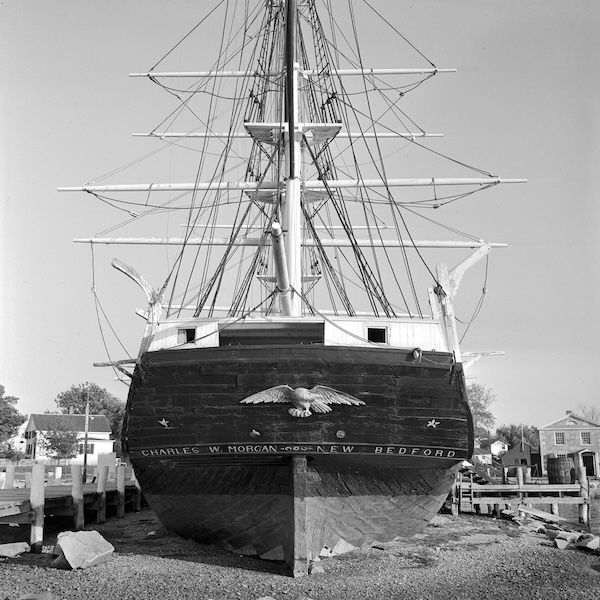
The first major project was hauling the Charles W. Morgan to restore it to floating condition in 1974. Next came re-topping the L. A. Dunton, restoring Sabino, and re-decking the Joseph Conrad. Through the following decades all of the floating watercraft had their turn in the shop: Emma C. Berry, Florence, Regina M., Annie, Nellie, Star, and Roann. Eventually, about every thirty years, major work is required on nearly all wooden vessels, and by now some have been in the shop twice. In addition, we’ve built new replica crafts—whaleboats, dories, lifeboats, and others—to support educational programming at the Museum. One of our greatest accomplishments was building the replica Amistad, launched in 2000.
By 2007, after more than 30 years of reliable service, the shiplift needed to be replaced, a major investment, but absolutely necessary to continue our work. The new shiplift gave us the capability to work on more than one large vessel at a time allowing us to haul additional vessels for maintenance and repair during the five-year Morgan restoration. This also allowed the Museum to bring in outside vessels for maintenance, producing a new income stream for the Museum.
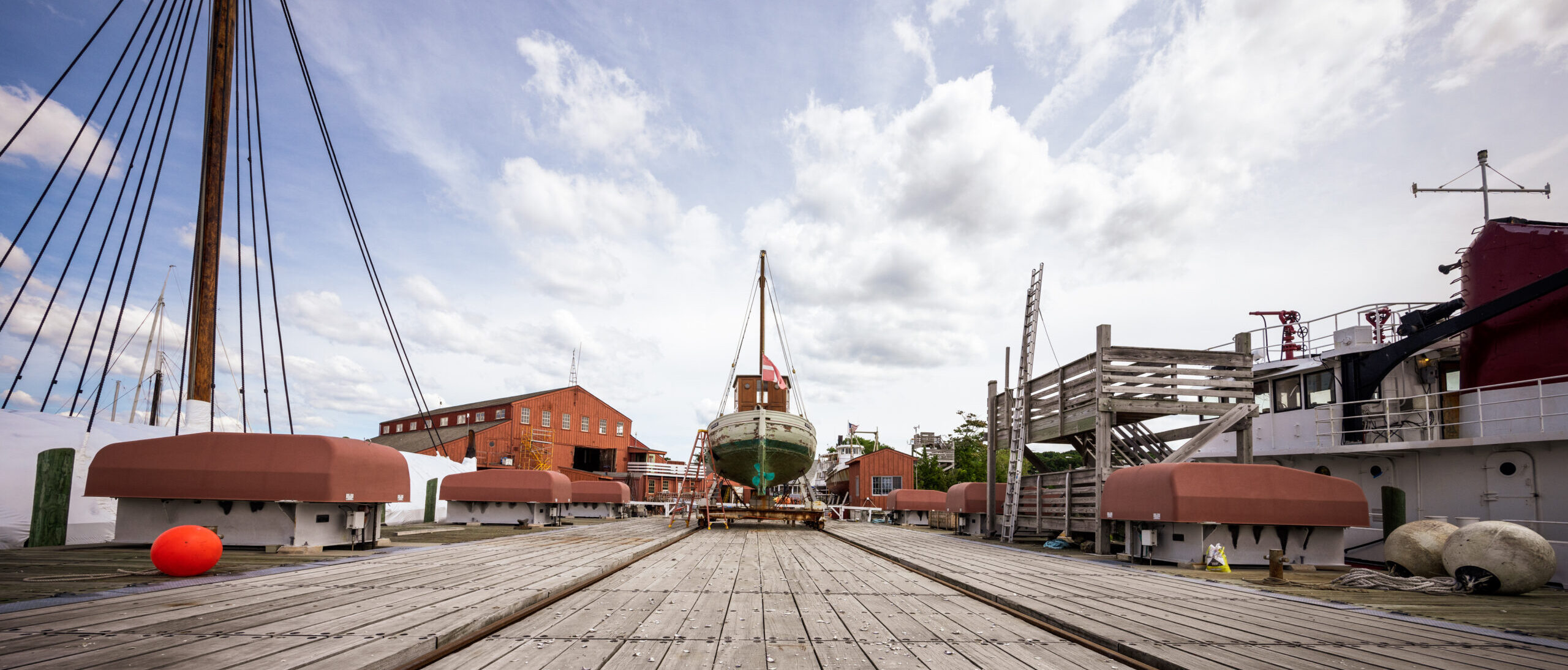
In recent years commercial shipyards have been more and more reluctant to take on wooden vessel projects, even simple routine haul-outs. Our capability has been a great benefit to the maritime community and to the Museum not only through income, but allowing us continuity of workforce, and a steady stream of material supply. This was especially important during the recent pandemic when our work was considered an “essential service” allowing work to go on when all else was shut down. In 2011, we began discussions with Plimoth Patuxet (formerly Plimoth Plantation) about the possibility of a major restoration for Mayflower II, built in 1956. Soon after the Morgan’s 38th voyage, Mayflower II was hauled in the Shipyard for a thorough survey. We found it was in need of significant work. The vessel came each winter for the next two years for preliminary work as Plimoth raised necessary funds and we gathered materials. This project was an ideal collaboration between Mystic Seaport Museum and Plimoth, their crew working side by side with our shipwrights for what grew to be a three-year project replacing about 70% of the vessel’s structure.

Following the Mayflower II, projects included major work on the 1942 fishing schooner Sherman Zwicker to replace the stern structure, planking, and caulking. Pilot, built in 1924, followed with major re-planking and caulking. Both vessels serve as floating oyster restaurants in New York City for the same owners. Next came Shenandoah built in 1964, formerly a passenger vessel, now a not-for-profit education ship, for a rebuild of its elegant stern, re-planking, and again caulking. Pilot later returned for re-decking and Mayflower II returned for routine haul-out and inspection.
We have become the shipyard of choice for many large wooden vessels, and demand for our skills and talent is growing. As an example of how important this facility is to other vessels, the passenger schooner Victory Chimes, built in 1900, and Kalmar Nyckel, built in 1997 as a re-creation of a 17th-century Swedish ship, travel several hundred miles for work in our Shipyard.
The Shipyard Gallery takes visitors behind the scenes of the Henry B. du Pont Preservation Shipyard into the work we do restoring and preserving historic vessels. A bird’s-eye model of the Shipyard provides orientation to the dynamic site, while images and information about past and current projects show the range of activities over the last 50 years. Using photos, sample materials, and the words of the workers themselves, the exhibit answers common questions such as:
Through touch, sound, and sight, visitors are brought deeply (but safely) into the story. In addition to highlighting past projects, the Shipyard Gallery also includes a changing section devoted to the current major project. The first offering in this area is a look at the restoration of Mayflower II, owned by Plimoth Patuxet. The exhibit also explores the construction of the vessel in Brixham, England, and the deep feelings that Americans have for the iconic Mayflower and Mayflower II through photos, video, collectibles, and models.
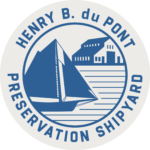
75 Greenmanville Ave
Mystic, CT 06355
860-572-0711
info@mysticseaport.org
Copyright © 2021 Mystic Seaport Museum